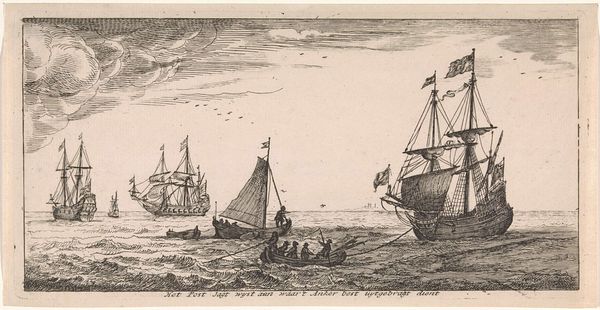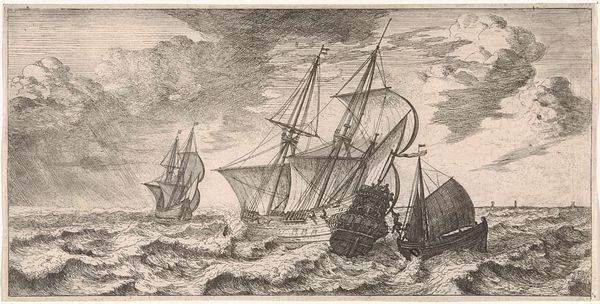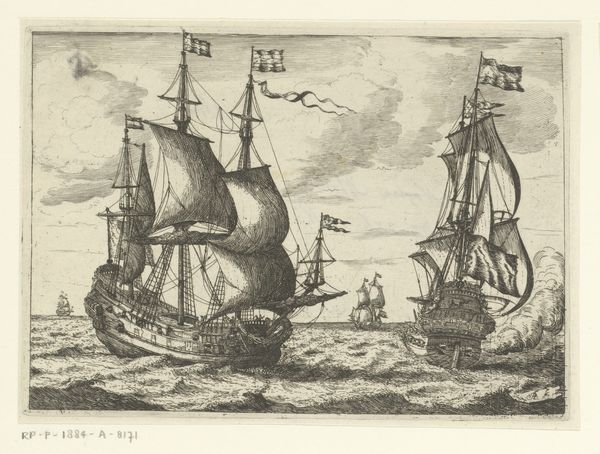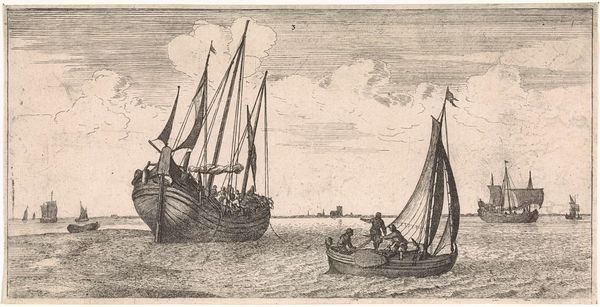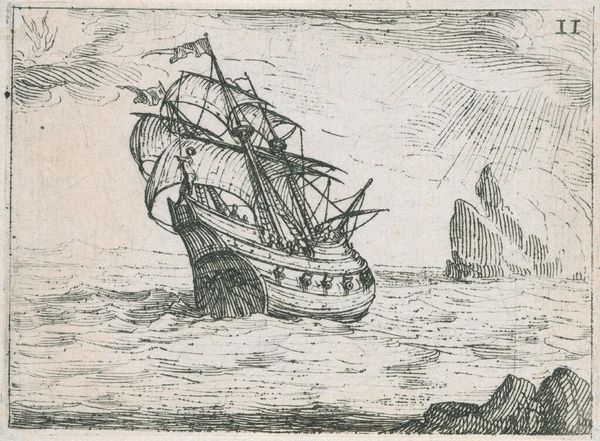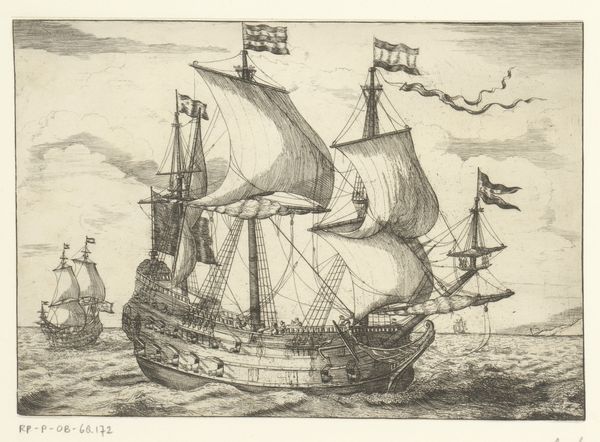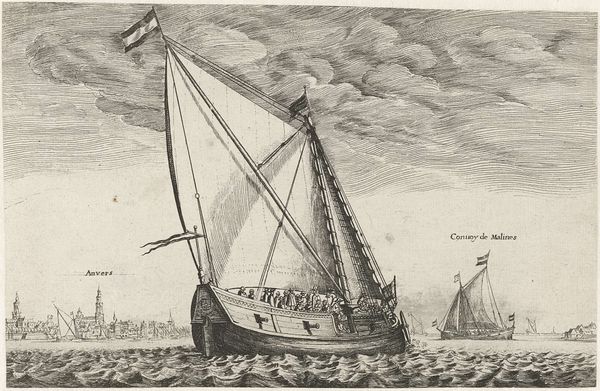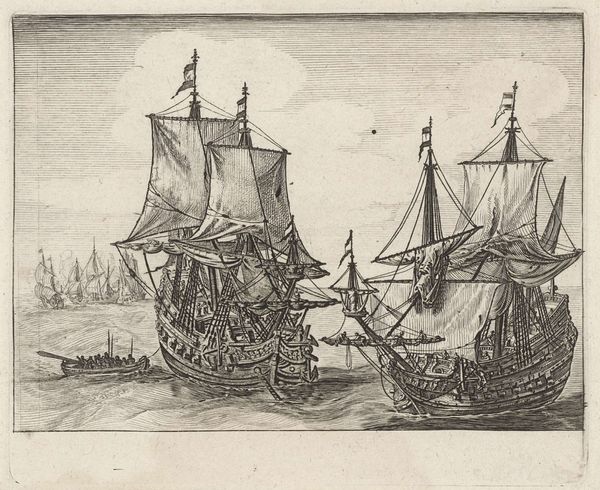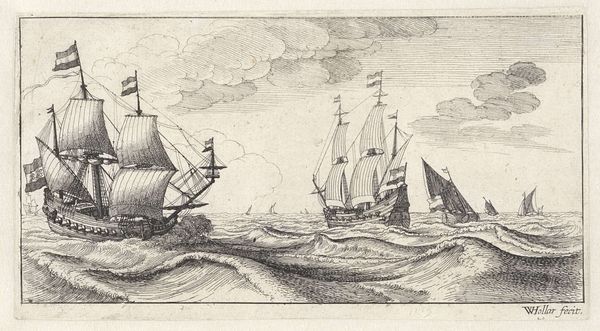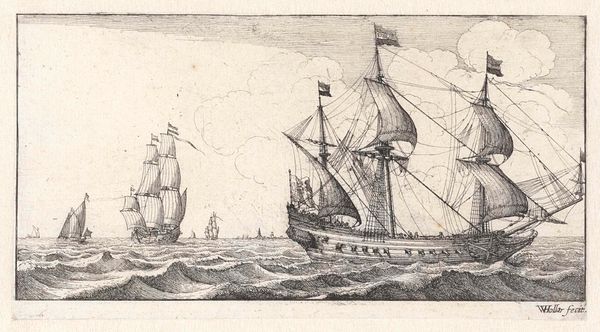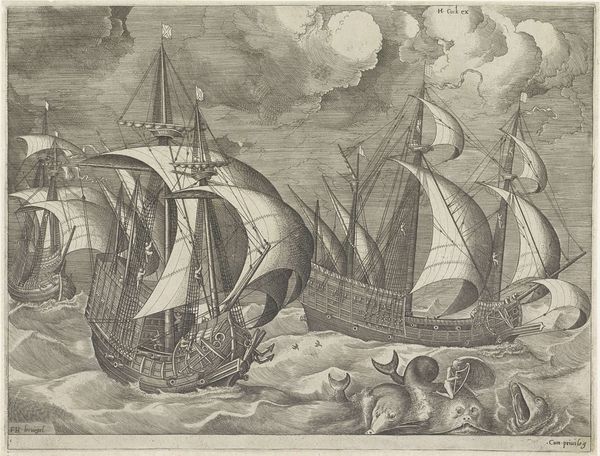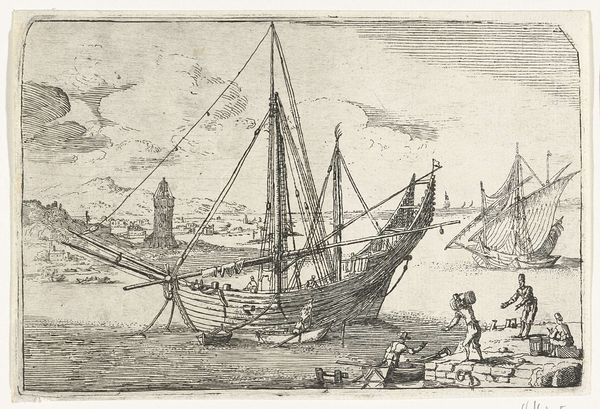
print, etching
#
baroque
# print
#
pen sketch
#
etching
#
landscape
#
sea
Dimensions: height 143 mm, width 287 mm
Copyright: Rijks Museum: Open Domain
Curator: Looking at "Reception of the Mail at Sea," a print by Joost van Geel created sometime after 1666, I am immediately drawn into this world, as if joining a quiet but essential daily exchange in a maritime setting. The seascape's monochrome creates an illusion of profound silence. What's your take? Editor: Indeed, the quiet is quite striking, achieved perhaps by the relatively spare composition with its expansive sea and sky, as well as by the masterful use of line. But notice also how the various orientations of these vessels create dynamism and tension across the plane. Curator: I’m particularly captivated by how the boats act as couriers here, these vessels acting as agents for a globalized 17th century world where these material exchanges carry deeper social meanings. Can you expand on how this scene may carry particular meaning for Dutch cultural identity? Editor: Of course, look closely at the contrast in technique. See how the lines describing the main ship are markedly bolder, denser and more textured than the lines used in the more simple boat at the fore and the single town on the horizon line? The interplay between the heavy lines, conjuring the immediate space, and the sparser ones creating the background pulls the viewer through the different dimensions. These Dutch printmakers were extremely good at visually signaling space in new ways. Curator: That layering draws us into an intricate network of connections. The figures on the smaller boats, exchanging letters, suggest the power of correspondence to unite distant individuals—linking to themes of commerce, nationhood, and familial bonds that resonate deeply. Consider the visual rhyme between the billowing sails of the larger vessels and the shapes of the clouds. Editor: Precisely. These are echoes that contribute to the structural unity of the image, but the symbolism doesn't have a clear trajectory. I also see a tension between detail and simplification; a structural motif typical for the era that reveals not just representational intent but perhaps, also some deeper uncertainties about human connectivity across great distance. Curator: Thank you. In its subtle details and complex composition, van Geel's print encapsulates the maritime pulse of the era, a network connecting lands and cultures. Editor: It shows us the degree to which visual economies determine historical narratives and, of course, our interpretation of them.
Comments
No comments
Be the first to comment and join the conversation on the ultimate creative platform.

